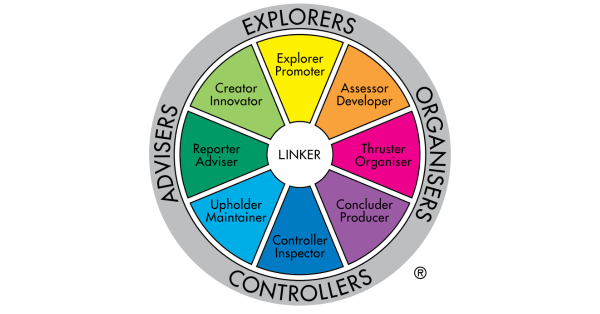It’s natural to enjoy working with like-minded people. It feels easy. Conversations flow, ideas are met with agreement and everyone seems to be on the same page. But there’s a catch: when everyone thinks the same, teams risk falling into the comfort zone of groupthink.*
Groupthink can limit critical thinking, shut down fresh ideas and create blind spots. As a result, opportunities go unnoticed, innovation stalls and problem-solving becomes shallow. Harmony may be high, but performance? Not necessarily.
Research consistently shows that teams with diverse work preferences and thinking styles perform better, especially on complex, evolving challenges. But that only holds true when those differences are understood and managed constructively.*
Why Opposites Perform
At the heart of the Team Management Profile (TMP) is the understanding that people bring different perspectives to work. The TMP framework identifies eight core work preferences, based on research first developed at the University of Queensland and refined over 40+ years. This framework helps teams recognise how these preferences impact team dynamics and outcomes.

Here's how pairing "opposites" can lead to better results:
1. Creator-Innovator + Concluder-Producer
- Creator-Innovators are visionaries. They imagine possibilities, explore new ideas and challenge the status quo.
- Concluder-Producers bring discipline. They like clarity, structure and making sure things are completed on time.
On their own: Creator-Innovators may keep brainstorming without implementing. Concluder-Producers might focus so much on sticking to the plan that they miss emerging opportunities or resist innovation.
Together: They balance vision with execution, turning big ideas into deliverable results.
The challenge: They may view each other as unrealistic or inflexible unless they learn to value each other’s role and difference in focus: idea vs outcome.
2. Reporter-Advisor + Thruster-Organiser
- Reporter-Advisors are reflective and thorough. They prefer to gather information and think things through.
- Thruster-Organisers are dynamic and results-focused. They like fast decisions and clear action.
On their own: A Reporter-Advisor might delay progress, or take too long to reach a decision, especially when consensus is hard to achieve. A Thruster-Organiser might act prematurely, sometimes overlooking key details or stakeholder input.
Together: They bring thoughtful decisions with timely execution.
The challenge: They might get frustrated and see the other as "slow and indecisive" or "reckless and pushy” unless they understand their approaches are complementary.
Beyond One-Dimensional Roles
One of the strengths of the TMP is that it doesn’t box people into single categories. Instead, it offers a percentage-based breakdown across all eight roles. This allows individuals and teams to understand:
- Their major preference (where they naturally thrive).
- Their secondary preferences (where they can flex when needed).
- Areas where they may need support or where they might want to develop and grow into.
In practice, being aware means greater agility. People know when to lead in a project’s work cycle, when to collaborate and when to ask for help. Teams know of potential gaps and can become more intentional about how they work together.
Making Diversity Work
Building teams that include different preferences is only half the equation. To turn that diversity into performance, leaders must:
- Facilitate conversations that help people understand each other’s preferred ways of working.
- Be aware of potential friction points before they turn into conflict so as to offer the right parameters, language, overview and feedback.
- Create shared language and appreciation around all types of contributions.
The Team Management Profile is a great tool to give teams a positive practical language to understand and harness diversity in thinking and working styles. With that framework in hand seeing the path forward for better outcomes becomes easier.
Want more?
If you’re looking to:
- Run a TMP team session to uncover and align your team’s diverse perspectives
- Bring in a local leadership and team development consultant
- Or become accredited in this proven psychometric tool yourself
We can help you take the next step.
Get in touch to learn more or enquire about how the TMP can support your team or practice.
*Research cited:




